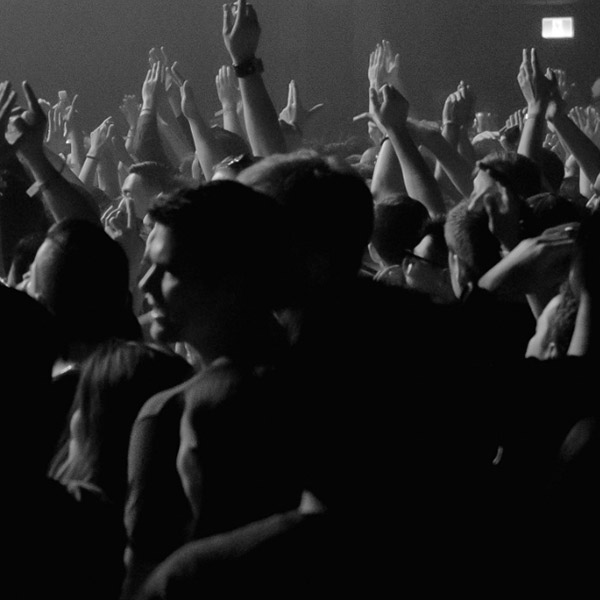Spotify Has Led the Music Business to Record Growth. So Why Are Artists & Songwriters So Angry?
January is not even over and 2025 already feels like a peak year for animosity toward Spotify — and that’s saying something given the criticism the company has attracted since emerging in 2008 as a potential savior for a piracy-riddled music industry. Even though music and commerce have always been uncomfortable partners in a marriage of necessity, the relationship has never been sourer.
Call it “the Spotify paradox.” Streaming — led by Spotify — has made the music business the biggest it’s been in 25 years, allowed unsigned artists to reach fans around the world, revived the popularity of local language music and enabled artists to sell their catalogs at valuations unthinkable a decade earlier — and yet discontent has never been greater. Industry revenues are soaring, but many artists and songwriters are struggling and angry.
Part of the disgruntlement can be explained by simple math. There are more songs by more artists chasing a finite amount of listeners’ attention. Spotify had a catalog of 35 million songs at the end of 2017, according to its F-1 filing. At the end of 2023 — the latest count available — Spotify had over 100 million tracks and 5 million podcasts. That’s nearly a threefold increase in catalog in just six years. And although its subscribers grew more than threefold to 236 million from 71 million over that time span, Spotify’s success at keeping its listeners engaged is such that the per-stream royalty — the metric people associate with economic health and fairness — is lower than that of its peers. (See Liz Dilts Marshall’s recent article that ranks streaming services by per-stream royalties, according to a report from catalog investor Duetti.) Global recorded music revenues have improved greatly over that time span, rising 81% to $28.6 billion in 2023 from $15.8 billion in 2017, according to the IFPI.
But as industry revenues have consistently grown, individual artists — whose numbers are growing fast because barriers to entry no longer exist — don’t feel like they’re receiving a fair share of the bounty. Discontent is so noticeable because, in part, there are more artists to complain. Three decades ago, it required a record contract to enter the commercial music world. Today, anybody can do it. Luminate tracked an average of 99,000 new tracks uploaded to DSPs per day in 2024. That’s about 36 million new tracks competing for listeners’ attention each year. On Spotify alone, 5 million artists had a catalog of at least 100 tracks, according to the company’s latest Loud & Clear report.
Of course, per-stream payouts could be improved if Spotify encouraged people to listen less, thereby reducing the number of songs paid out from a fixed pool of money and raising the average per-stream royalty. With less music streamed, the average payout would shoot well beyond its current 0.3 cents per stream. But that would be counterproductive. In the streaming world, growth comes from keeping people engaged and, ultimately, turning them into paying subscribers. Turn away listeners and they could end up at social media platforms, where payouts are even skimpier, or broadcast radio, which pays artists and record labels nothing.
Many people see that royalties from purchases are fairer than streaming royalties, but listening and buying habits have changed how the money flows. As more people streamed more often, artists and songwriters received less money from old formats. In the fourth quarter of 2017, AM/FM radio accounted for 48% of Americans’ time spent listening to audio while streaming (including YouTube and podcasts) took a 26.5% share, according to Edison Research. By the fourth quarter of 2023, AM/FM commanded just a 36% share, while streaming (including podcasts) accounted for 45%. (Including audiobooks, which are both streamed and downloaded, that number rises to 48%.) Owned music’s share of listening — a.k.a. sales of CDs, vinyl and downloads, which fell sharply over that time span — dropped from 13% in 2017 to 4% in 2023. Also, in the streaming economy, new artists are competing for royalties with older songs. In the U.S. in 2024, catalog music (defined as more than 18 months old) accounted for 73.3% of total album equivalent consumption, according to Luminate.
Much of the discontent over Spotify, however, is less wonky and more human. The company’s actions have become widely seen as antithetical to the artists it claims to support. A turning point came in December when Harper’s ran an excerpt from Liz Pelly’s Mood Machine, a book that reveals, among other things, how Spotify bought music from nameless musicians to infuse some playlists — namely background music such as “chill” where brand names aren’t necessary — with cost-saving alternatives to professional musicians who would receive royalties for each stream. This alleged use of “fake” musicians has been reported in music circles for years, but Pelly’s book, in part because of its deep reporting and previously unknown details, captured mainstream attention rarely attained by a music industry topic that doesn’t involve Taylor Swift.
The Harper’s article, and Pelly’s ensuing book tour, spawned a flood of reviews and reaction articles about how Spotify devalues music, hurts artists, gives users a poor listening experience and is an algorithm-driven song-picker that provides its users only an illusion of choice. But the onslaught of Spotify coverage at old-school media is nothing compared to the countless videos uploaded to YouTube over the years. Enter a search phrase such as “Spotify hurts artists” or “Spotify royalties” and you can wade for hours through such topics as Spotify’s change in royalty payouts (“Spotify no longer paying artists for streams in 2024?”) and explainers on royalty accounting (“Spotify doesn’t pay artists….this is why”).
Contributing to the storm clouds was Spotify’s scheme to lower its royalties to songwriters and publishers. Last March, Spotify incensed the songwriting community when it adopted a lower mechanical royalty rate by contending its premium subscription tier’s music-and-audiobook offering qualified for a reduced royalty rate granted to bundles of digital services. Unsurprisingly, the publishing community, including numerous Grammy songwriter of the year nominees, said they wouldn’t attend Spotify’s Songwriter of the Year Grammy party, which ended up being canceled in the wake of the fires in Los Angeles. Earlier this week, a U.S. court agreed with Spotify, saying the federal royalty rules are “unambiguous” and rejecting the Mechanical Licensing Collective’s lawsuit arguing that Spotify was not actually offering a bundle of services.
Writing the biggest checks of any streaming service doesn’t get Spotify out of this paradox. This week, Spotify announced it paid $10 billion to the music industry in 2024, a tenfold increase from a decade earlier. That figure implies Spotify generated nearly 20% of the global music copyright, assuming 2024 saw an 8% increase from Will Page’s latest estimate of $45.5 billion in 2023. As Spotify’s payments to the music industry increased tenfold over the last decade, streaming’s growth helped compensate for declines in CD and download sales, and global recorded music revenues more than doubled from 2014 to 2024. But, again, aggregate industry gains don’t capture the experiences of individual artists who feel cheated by streaming economics.
Help could be on the way — someday. If it’s higher per-stream royalties artists want, then changing how royalties are calculated could make a difference. Currently, a streaming service pays royalties by divvying up all users’ subscription and advertising revenue amongst all the tracks streamed during a given month. Whether or not you listened to Taylor Swift, your subscription fees go into the same pile of money funded by Swift’s fans. An alternative method that has gained some traction is a user-centric approach that pays artists from each individual listener. Under this scheme, a listener’s subscription fees, or advertising revenue, goes only to the artists that person streamed. That’s a more favorable approach for album-oriented and niche artists and less appealing for popular songs that get repeat listens. So far, only SoundCloud has adopted the user-centric model.
Artists’ royalties also stand to benefit from efforts to clean up streaming services’ catalogs. Spotify and Deezer have signed on to Universal Music Group’s plan to reward professional musicians by demoting “functional” music and incentivizing distributors to crack down on fraud. Deezer has removed tens of millions of low-quality tracks, and anti-fraud measures may explain why the number of daily new tracks uploaded to streaming services fell about 4% in 2024, according to Luminate. But not all artists feel like they are benefiting from these changes. Spotify’s move to limit royalty payments to tracks with at least 1,000 streams was widely seen as harmful to developing artists (as seen in this column on the streaming threshold from Ari Herstand).
The Spotify paradox may never end, but artists can adjust to their new environment. In 2014, Swift’s catalog was removed from Spotify by her record label, Big Machine Label Group. Earlier that year, Swift had penned an op-ed for The Wall Street Journal that argued “music should not be free” and urged artists to “realize their worth and ask for it.” Her entire catalog returned to Spotify and other streaming platforms in 2017. Did the economics of streaming change during Swift’s three-year hiatus? No, not really. Licensing deals may have extracted marginally better terms for artists and record labels, but streaming royalties are still a fraction of a cent per stream. One thing that changed was that more of Swift’s fans became subscribers to Spotify, Apple Music (which launched in 2015) and other streaming platforms. Today, free streaming still exists, and a stream is still worth a fraction of a cent, but Swift is a case study in how to cultivate a vibrant streaming business while reviving the lost art of album sales.
Glenn Peoples
Billboard









